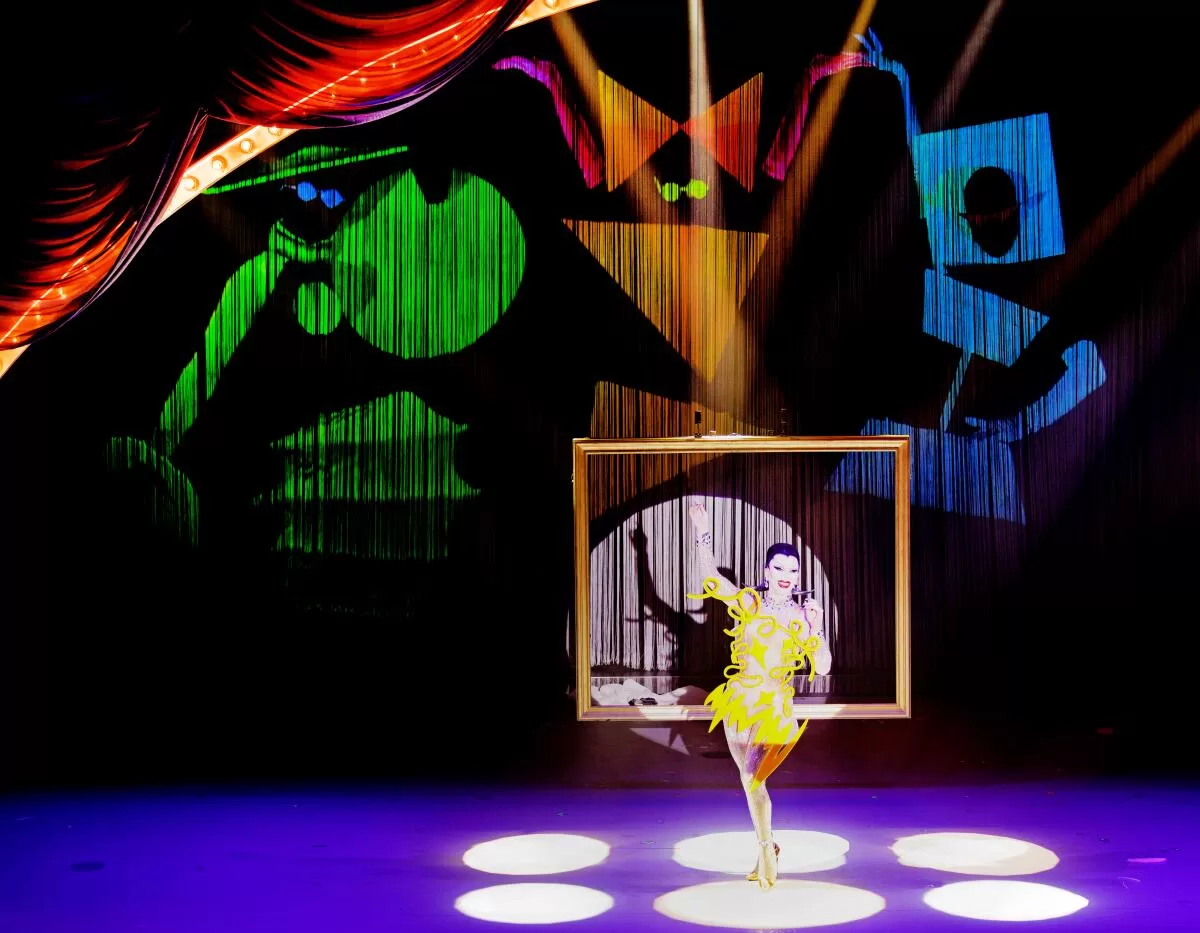Rappelling on a giant pink boa that has descended from the heavens, the drag artist known as Sasha Velour makes a flying entrance worthy of Cirque du Soleil. The occasion is “Velour: A Drag Spectacular” — and the word spectacular is not an overstatement.
Visually, the show, which is having its world premiere at La Jolla Playhouse, is a feast of pastel colors, aerial thrills, painterly projections and costumes that combine the bawdy imagination of Folies Bergère with the futuristic wit of today’s haute couture.
Musically, the piece is just as exuberant. The production, co-created and directed by Moisés Kaufman, throbs with lip-synchable pop hits of such eclectic range that the dance club energy eventually ensnares everybody.
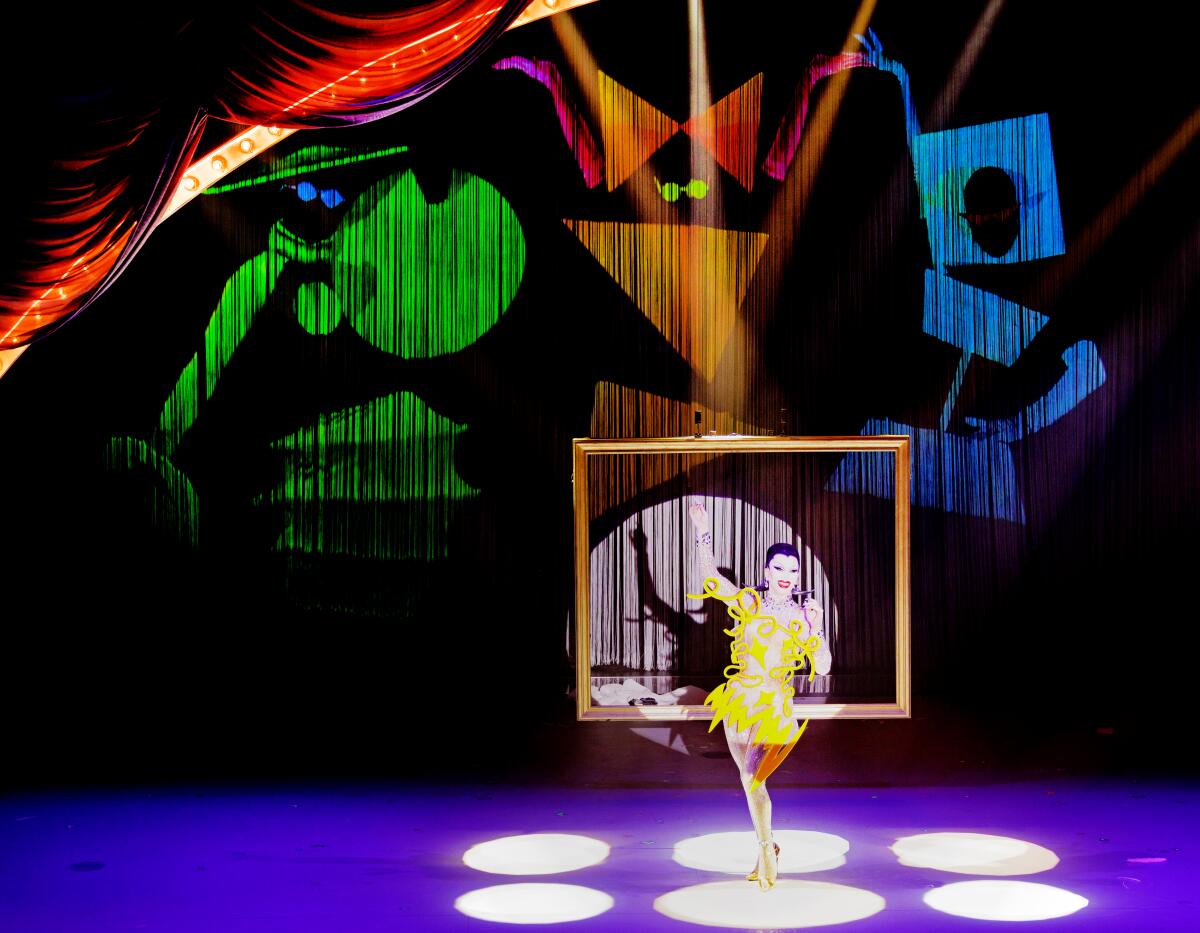
As a work of pure performance, “Velour: A Drag Spectacular” is an unalloyed delight. The show, however, is less successful in creating a dramatic through line.
(Rich Soublet II)
“Velour: A Drag Spectacular” continues La Jolla Playhouse’s fruitful collaboration with Tectonic Theater Project. This New York-based company, co-founded by Kaufman, has spun from documentary sources a long line of rigorous, brilliantly uncategorizable stage works, including “Gross Indecency: The Three Trials of Oscar Wilde,” “The Laramie Project” and the Pulitzer Prize-winning play “I Am My Own Wife.” A more recent success, “Here There Are Blueberries,” which was launched at La Jolla Playhouse in 2022, was a finalist for the 2024 Pulitzer Prize for drama.
As a work of pure performance, “Velour: A Drag Spectacular” is an unalloyed delight. The show, however, is less successful in creating a dramatic through line. The aspiration to be closer in spirit to a book musical than a revue is unfulfilled in part because Velour hasn’t decided which story to focus on.
The script, by Velour and Kaufman, bounces between Velour’s own coming-of-age tale and a more general homage to the art of drag. Neither focus gets its due, and the switching back and forth results in a loss of narrative rhythm. It’s the only area in which Velour occasionally seems out of step.
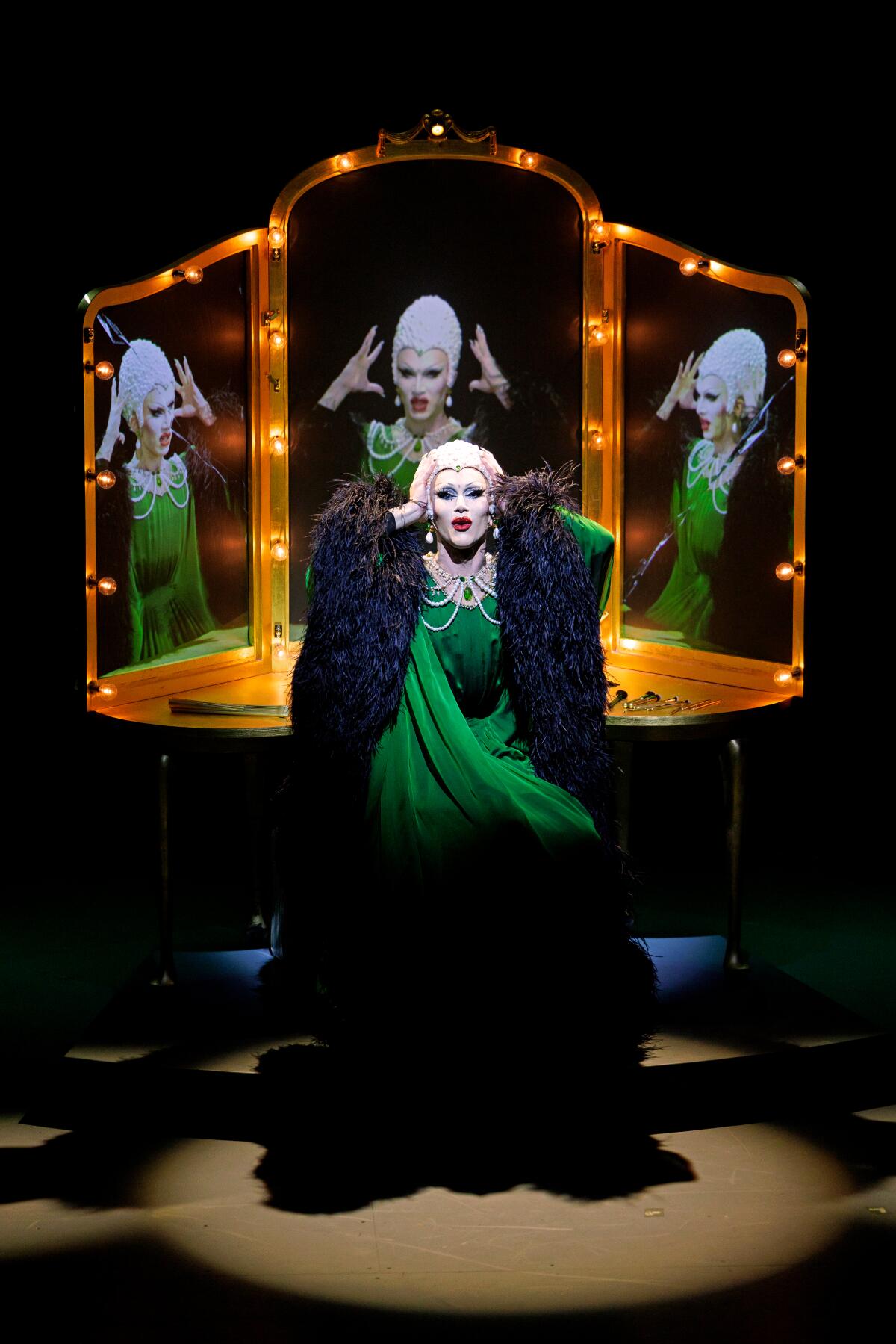
Sasha Velour was crowned the winner of “RuPaul’s Drag Race” in 2017.
(Rich Soublet II)
Not that it’s not a perfect time for drag queen story hour, given the hateful ludicrousness of our culture wars. Velour personalizes her journey from social outcast to the fabulous 2017 winner of “RuPaul’s Drag Race.” An advocate and artistic trailblazer today, she has mastered the art of the drag reveal by recognizing the power of naked truth.
She begins at the beginning: “From the age of 3, people have been asking me: ‘Are you a boy or are you a girl?’ To this day, I still haven’t decided.” Having been asked this question constantly by “adults, kids, mall Santas,” she can’t help wondering why “it’s always other people who make your gender feel like a crisis.”
Playing dress-up at her grandmother’s, where she’d deck herself to the nines in borrowed costume jewelry, she soon found out that what was encouraged by her open-minded family was derided in the outside world. To conform to masculine conventions while staying true to her drag spirit, she began masquerading as Dracula. “Because somehow a bloodsucking vampire is more permissible than a dress,” she quips.
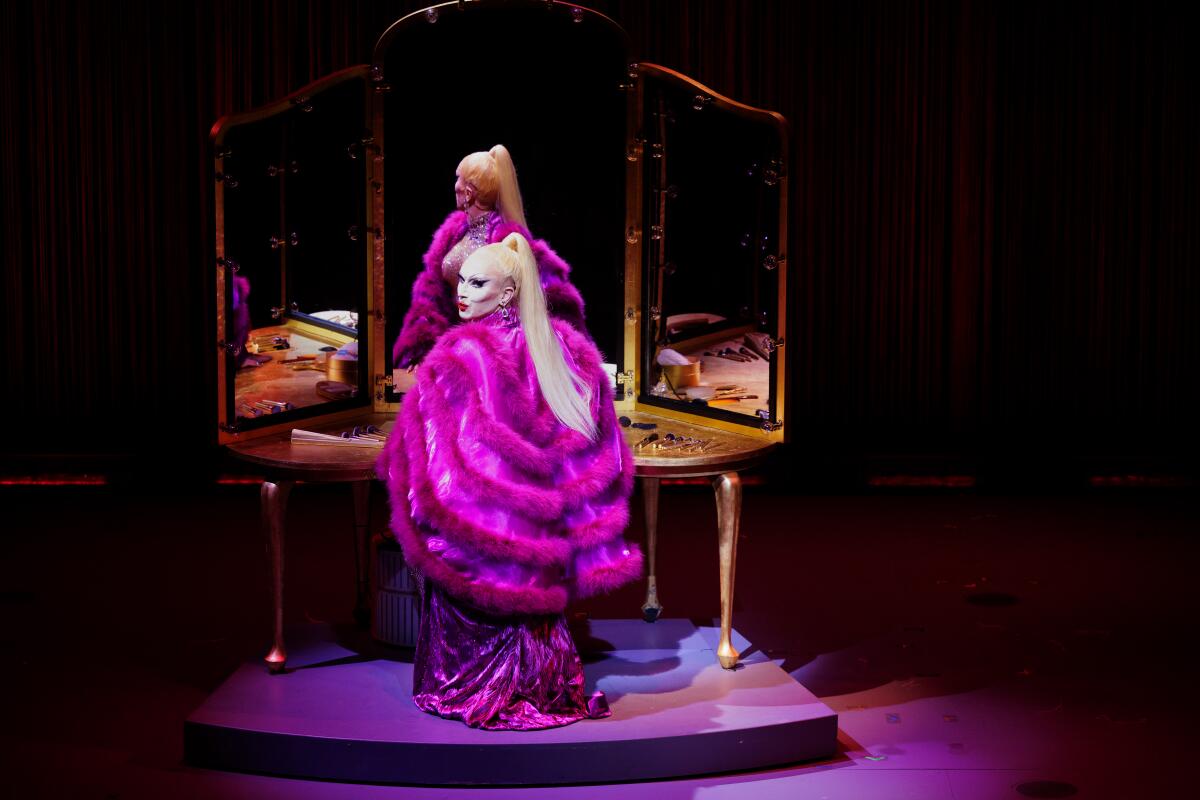
“Drag queens help shape culture but we are erased from it time and time again,” Velour explains in her coming-of-age tale.
(Rich Soublet II)
Velour’s progressive mother is more concerned with her child’s politics than her gender expression. But safety is a concern. She tells young Sasha: “You have to think about how people will react. Not everyone is as accepting as Grandma Dina.”
Self-acceptance won’t be easy, but it will first require self-understanding. Yet how can you understand yourself when so much of the glorious history of drag has been buried?
“Drag queens help shape culture but we are erased from it time and time again,” Velour explains, before delivering the story of one such forgotten drag queen whose elusive brush with cinematic fame becomes the entry point for a biographical study that is not as straightforward as it initially appears.
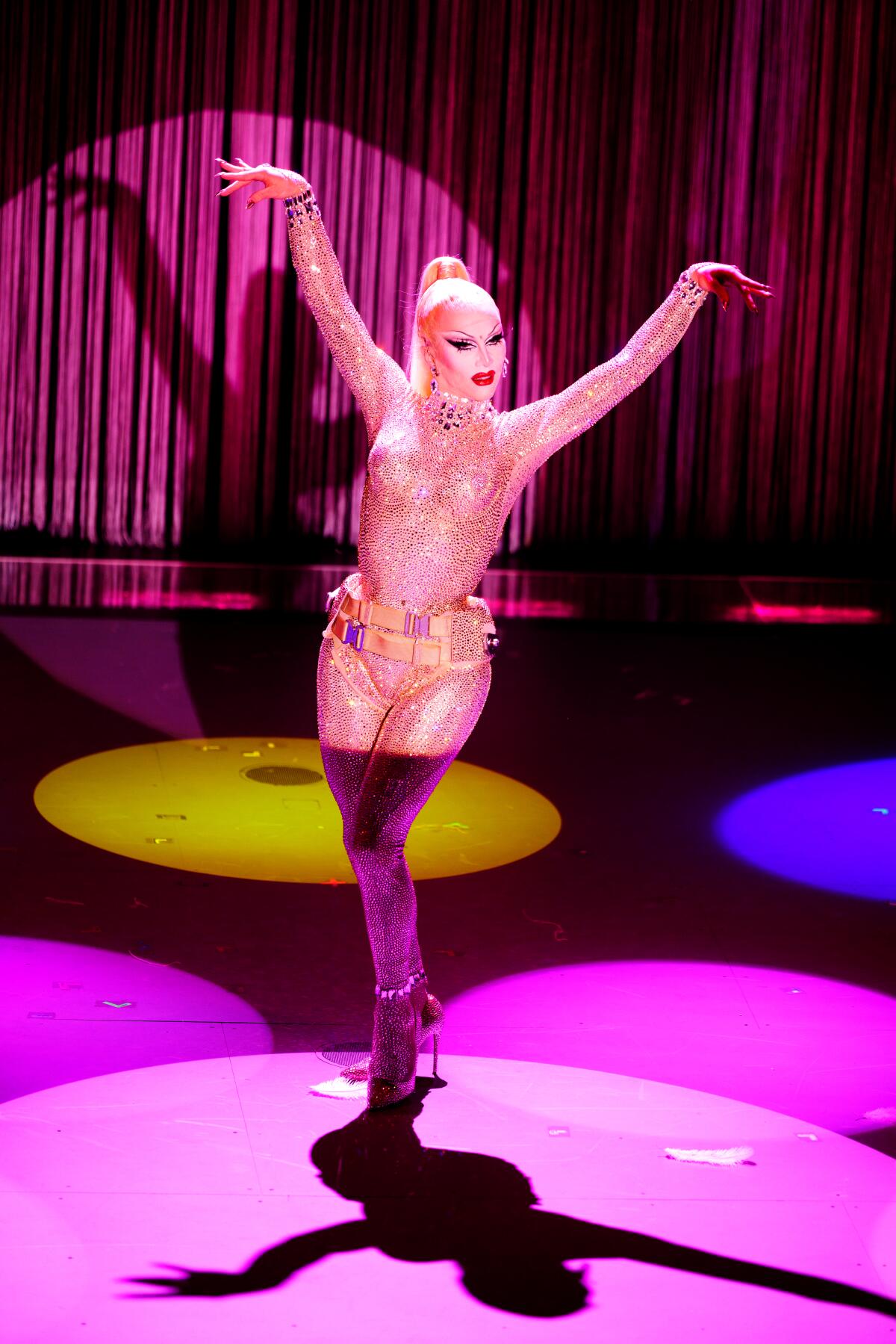
As a performer, Sasha Velour stands out more for her agile dancing than her camp wit.
(Rich Soublet II)
It’s my turn to be elusive, because I don’t want to give away the show’s secrets. At the same time, I can tell you that the script doesn’t seem as carefully worked out as the visual production or sensational musical numbers.
Hits you may not have heard for some time but will still find irresistible are transformed in a way that gives them a rousing queer update. Aerosmith’s “Dream On,” Kiss’ “I Was Made for Lovin’ You,” Bjork’s “All Is Full of Love,” and Taylor Dayne’s “Tell It To My Heart” are just a few of the tunes redeployed for liberated joy. “My Way,” the Shirley Bassey version, makes a fitting finale for a show about the inner struggle to embrace one’s inner diva.
Velour is obviously inspired by the drag queens who helped pave her way. There’s a lip-synching telephone bit that invokes a classic routine of the one-and-only John Epperson, better known as Lypsinka. But Velour is her own entity. She’s more acrobatic than her predecessors and a touch more cerebral about political matters. As a performer, she stands out more for her agile dancing than her camp wit.
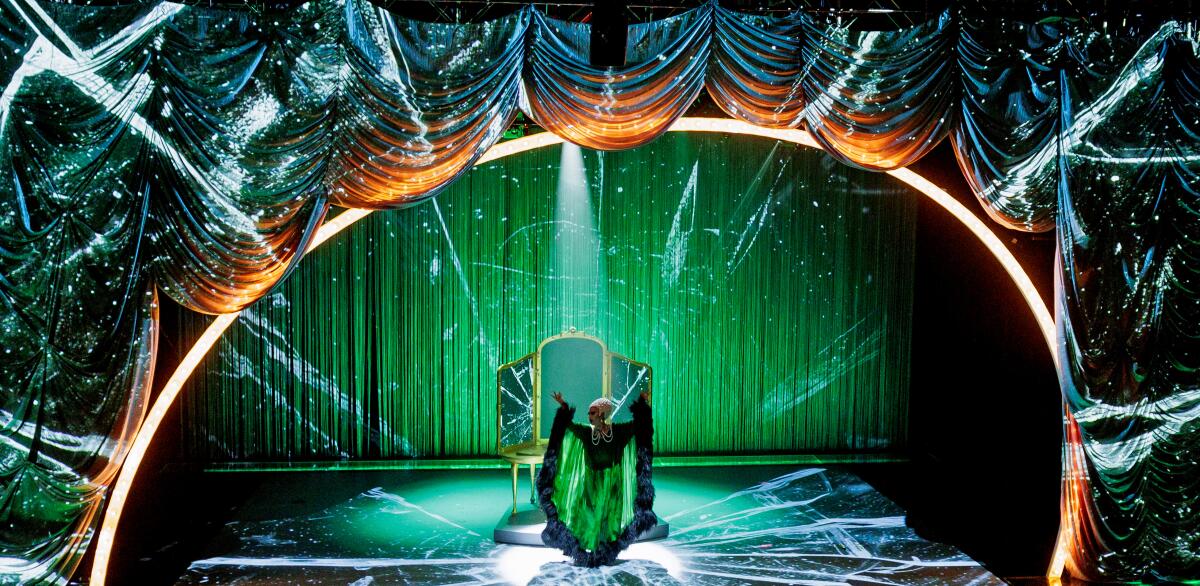
Sasha Velour is obviously inspired by the drag queens who helped pave her way.
(Rich Soublet II)
This is not a solo show. Velour gives her supernumeraries their star turns. Ezra Reaves, Moscato Sky and Amber St. James play stagehands who, through some clumsy shattering of the fourth wall, seize their opportunities to strut their drag stuff.
More impressive than the ensemble support is the synergy of the design team. David Rockwell’s scenic design whips up a confection shop of theatrical dreams. Diego Montoya Studio’s costumes give fantasy form and truth. Cosette “Ettie” Pin’s projection design made me imagine what it might be like if the great Impressionist painters were equipped with iPads. And House of Velour’s video design allows the show’s star to multiply herself in performance sequences that dissolve the boundary between screen and stage.
Home video footage of young Sasha discovering an identity, timidly yet determinedly, with joy as well as caution, captures our hearts as we watch an artist deconstruct not just the male-female binary but the dichotomies between art and life, performance and reality, and truth and fiction.
Velour’s story deserves more sustained focus, but the show is nonetheless spectacular.
‘Velour: A Drag Spectacular’
Where: Sheila and Hughes Potiker Theatre, La Jolla Playhouse, 2910 La Jolla Village Drive, La Jolla
When: 7:30 p.m. Tuesdays-Fridays, 2 and 8 p.m. Saturdays, 1 and 7 p.m. Sundays. Ends Sept. 15
Tickets: Start at $30.
Contact: lajollaplayhouse.org; (858) 550-1010
Running time: 1 hour, 45 minutes
